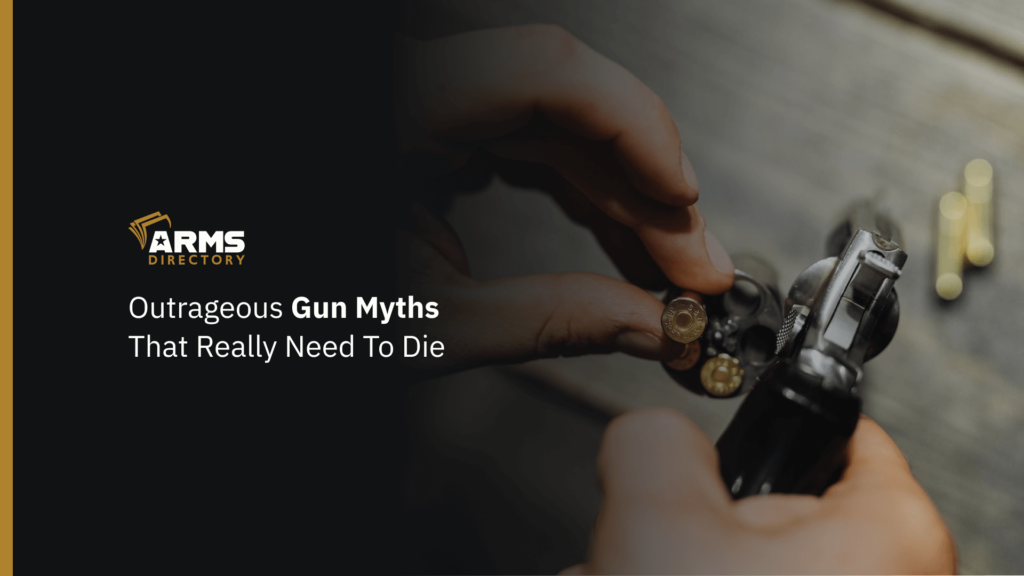
Outrageous Gun Myths That Really Need To Die
For many years, I worked at a gun store , and as a certified firearms instructor and concealed carry instructor, I taught several types of classes ranging from beginners to advanced training courses employing high-level self-defensive training techniques.
If you work in the firearms industry long enough, you’ll hear some real whoppers when it comes to firearms and ballistics Fudd-Lore.
Some of them come from eager sales guys in the firearms business (who are only interested in moving a gun off the shelf), and others come from the misconceptions that are spread by people who don’t know any better.
Whether well-intentioned or not, these gun myths are perpetuated through repetition.
5 Outrageous Gun Myths Debunked
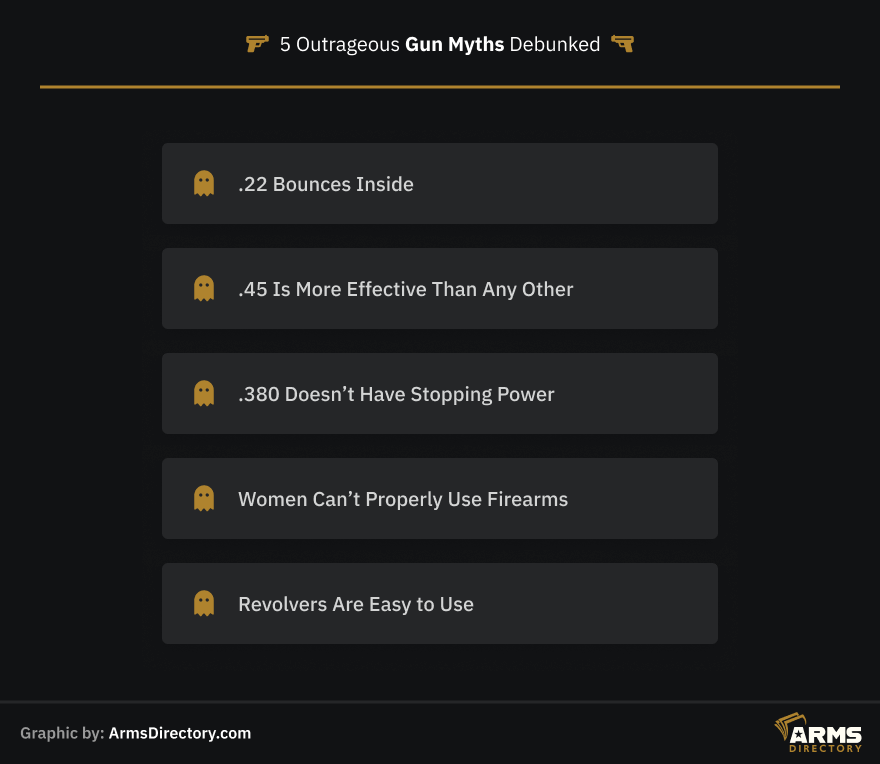
1. .22 Bounces Inside
2. .45 Is More Effective Than Any Other
3. .380 Doesn’t Have Stopping Power
4. Women Can’t Properly Use Firearms
5. Revolvers Are Easy to Use
.22 Bounces Inside
Perhaps you’ve heard the phrase: “Hit ‘em with a .22, and it’ll bounce all around inside them.”
Well, that’s an interesting idea, and I suppose it’s somewhat plausible given the right set of circumstances. It is, however, part of the common gun myths we’re covering today.
Using post-mortem examinations and ballistic dummies with bone and tissue analogs demonstrates that this phenomenon, by and large, does not occur.
Yes, .22LR is a potentially very lethal round, but if it was so effective, then wouldn’t it be employed by militaries and law enforcement agencies everywhere?
Related Post : Auto Mag – The Iconic Big Game Hunting Pistol
.45 Is More Effective Than Any Other
“45 is the Lord’s caliber” or, “I only carry a 45 because they don’t make a 46!”
Hey, if you like 45, and you shoot it well, then, by all means, keep using it. But don’t labor under the delusion that using that particular round is any more effective than any of the other, similarly sized and powered projectiles, like 9mm or 40S&W.
Statistically speaking, there’s very little difference between them. Modern manufacturing techniques and advancements in propellants have ensured that 9mm, 40S&W, and .45ACP are on a virtual par with one another.
I have seen a sales guy get very pushy with customers, insisting that people buy whichever caliber “they” think is most appropriate. They’ll cite all kinds of anecdotal “evidence” to support their claims, and they’ll quote average ballistic energy to back it all up.
But ballistic energy is just one metric, and if you take nothing else away from this, understand that “more power does not necessarily mean more effective”, and “less power does not mean less effective, or not effective enough”.
Sure, 30 years ago 9mm rounds would bounce off car windshields. But that was 30 years ago. Bullets have changed a LOT since then. They’ve all gotten better, but none more so than the 9mm cartridge.
.380 Doesn’t Have Stopping Power
“If you want some real stopping power, don’t bother with .380, use a round intended for grownups.”
Nonsense. First “stopping power” really isn’t a thing with handguns, but more on that in the next article. .380 has historically been a very effective round for what it was intended: which is to create distance between yourself and an attacker.
There are different firearms to be used for different purposes, and those different firearms often utilize different cartridges. .380 is perfectly well suited for close encounters where it’s imperative that you put some distance between yourself and a bad guy.
But it might not be optimal for home defense, for instance. This is usually due to the fact that handguns chambered for 380 are smaller, have relatively short barrels, and have relatively small round capacities.
And while shorter barrel lengths do not absolutely translate into poorer accuracy, it IS more difficult to be accurate with a short barrel versus longer ones, which are typically found in larger caliber guns.
But in the end, if you can’t shoot a 9mm, 40S&W, or 45acp round very well, you will not be doing yourself any favors by going with any of those choices.
Far better to have a round that you can shoot well, and train with, instead of one that makes a slightly larger hole. Because shot placement is always the key.
Women Can’t Properly Use Firearms
Here’s another myth of a different kind : Women can’t, or won’t do what it takes to learn how to properly use and care for their firearms. Quite the contrary, women and guns get along pretty well.
In fact, during my years as a firearms instructor, my best students by far have been women.
(They actually listen, and then employ the techniques they were taught!)
“Let’s get a little revolver for the little lady, here” , said the overprotective gentleman advising his female friend at the gun store.
Unfortunately, this is all too common of a scenario at local gun stores. Often, a woman will express a desire to learn how to use a handgun for personal defense, and there will be no shortage of eager men willing to help her find the “perfect gun”.
They walk into the gun store and move directly toward the double-action-only, snub-nosed revolvers. “Little revolver for the little lady”… I still cringe whenever I hear that. It plays into the myth that women can’t, or won’t take the time, to learn and understand a semiautomatic firearm.
Revolvers are fine, and I have my share, and they definitely have a place in a defensive sense for those with specific needs. I love them, in fact. There’s something undeniably attractive about the classic lines, and curvy metal. But there are better choices when it comes to personal protection.
Related Post : Brand Spotlight: Incognito Wear IX – Stylish and Functional Clothing for Concealed Carry
Revolvers Are Easy to Use
Revolvers are SIMPLE to use, but they’re not necessarily EASY to use. There is a difference, and it bears an explanation. Once you decide to shoot a revolver, you just pull the trigger, right?
And if a round doesn’t go off, you just keep pulling that trigger until it does – at least that’s what the old guys keep saying. Here’s the problem – trigger pull on the vast majority of snubby revolvers is ridiculously heavy – especially for people with joint degeneration problems, carpal tunnel, etc.
The harder the trigger pulls, the more muscles the shooter has to recruit in order to move it back. The more muscles they use, the less refined motor skills can be employed to keep the muzzle pointed at the target.
Second, because there’s no mechanical spring, delay/browning action, etc. recoil from a basic 38 special round can be surprisingly stout – especially considering the small size of the typical small 5 shot revolver. Stout recoil, or “snappiness”, can cause problems with flinching in novice shooters.
Speaking of 5 shot revolvers, that’s all you get – 5 shots. Even today’s most anemic semiautomatic offerings give you more than that! Next, the sights for snubbies are usually very rudimentary.
There’s usually just a groove milled into the frame, and then a blade that is also milled onto the short barrel, so accuracy at meaningful distances becomes problematic. Those same guys have insisted that the lady doesn’t have to learn to aim her gun, because the attacker will only be a couple of feet away…
The problem with that is – The attacker is only a couple of feet away!! Finally, revolvers are mechanically complex relative to a typical striker-fired semiautomatic. I’ve been told that a revolver never jams. Um… Yes, they do.
And when a semiautomatic jams, clearing, and reloading is a relatively quick and simple task that can be done even under pressure. But when a revolver goes down, it goes down hard, and the expertise of a gunsmith to resolve the issue is not uncommon.
Bonus Myth: AR is Not a Military Weapon
We could not end our list of gun myths, without explicitly mentioning the AR. AR-15 rifles are a beloved weapon choice for many gun enthusiasts. They are not by any means military, nor assault weapons, as gun opposers often wrongly call them.
This is a part of those 100% gun myths that anti-gun movements use. The truth is that AR does not stand for “assault rifle”, “automatic rifle”, or “American rifle”, it stands for “ArmaLite Rifle”, from the name of the company that first made the firearm back in the 1950s.
Society might be focusing on AR, because it looks like a battlefield weapon, however, the AR-15 rifle was designed for civilian use, not military. The AR-15, as we know it today, has never been used by any military in the world.
Related Post : Should You Buy An AK? [AK vs. AR]
Summary
Unfortunately, there will always be those pushing a narrative or using some myths about guns to get people to buy whatever it is they’re selling.
So arm yourself with knowledge and take what’s said with a big grain of salt. Always inform yourself, and trust real firearms experts, instead of blindly obeying some gun myths.
Of course, it goes without saying to never let someone bully you into buying something THEY think is right for you if you don’t believe it’s right for yourself!



![Gun Registration Requirements by State [What You Need to Know]](https://vault.armsdirectory.com/wp-content/uploads/2023/10/27073220/Gun-Registration-Requirements-by-State-What-You-Need-to-Know-1024x576.png)
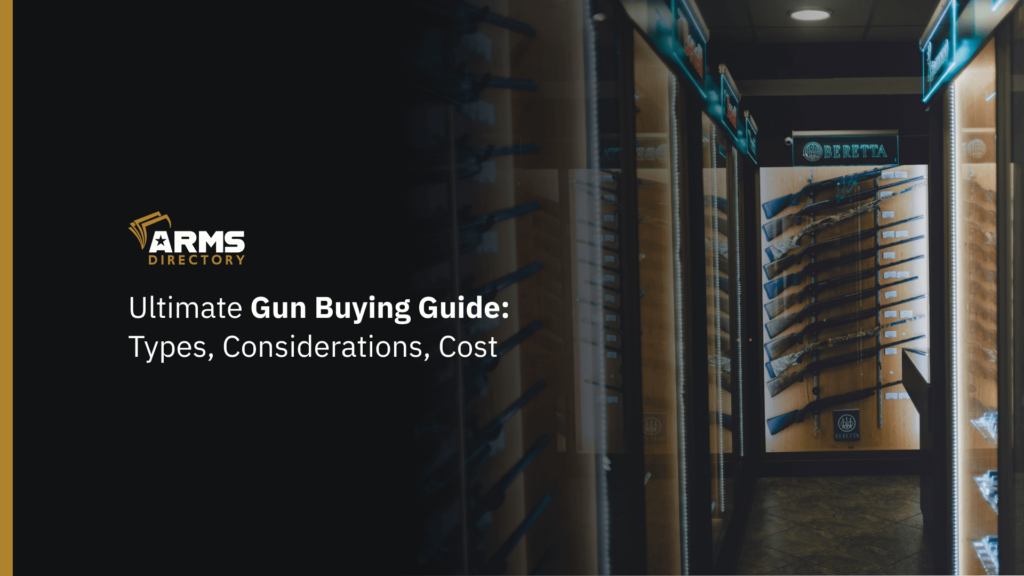
![The Ultimate Shooting Accessories for Every Weapon [A 2023 Beginners Guide]](https://vault.armsdirectory.com/wp-content/uploads/2023/08/30071223/The-Ultimate-Shooting-Accessories-for-Every-Weapon-A-2023-Beginners-Guide-1024x576.png)
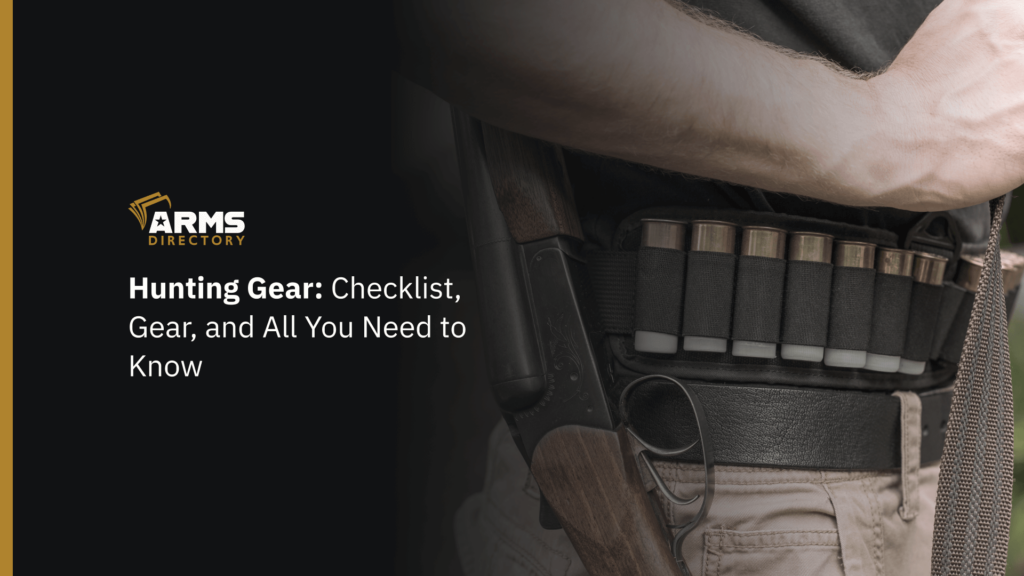
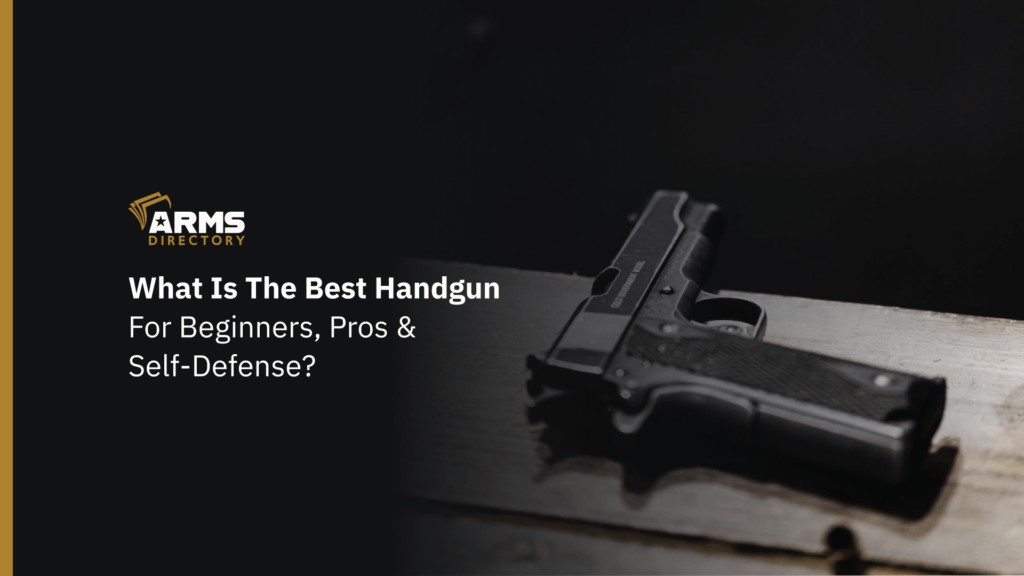
First off, well written. I find the read to be easy to digest and informative. However, Mr. Feltman, you mentioned that ballistic energy is only one metric. Hypothetically, if I were to recommend a handgun to a first-time shooter, what parameters and metrics should I use to make an informed suggestion?
That’s a question that begs a lot more questions in response! Is the shooter male or female? Hand size and expectations play into it. If they’ve never shot before, then you can start them out with a .22 or a full sized 9mm handgun. As a trainer, I would feel them out to try and tell what they’re emotionally prepared for. A full sized 9mm is typically very easy to shoot – for MOST people, but if they’re timid when I’m going over safety and proper technique before we hit the range, then I’ll steer them more toward the gun with the lighter recoil, and ease them into higher calibers as we go along.
As far as ballistic energy being but one metric, it is. It’s informative, but not necessarily definitive – if that makes sense. For instance, just because a bullet doesn’t knock over a steel plate with resounding authority, doesn’t mean it’s not an effective round for defense. An example I’ve used in my classes is the Fort Hood shooting several years ago. Maj. Nadal Hassan went on a rampage with an FN Five Seven handgun. That gun shoots a 5.7x28mm cartridge, and is considered to be *somewhat* on par with 9mm… Energy-wise, it is fairly anemic in comparison. However 46 people were shot that day, and despite expert emergency care, 17 lost their lives. That’s a fatality ratio of roughly 1:3 which is much higher than the typical handgun ratio of 1:6 typically seen in the US. Hassan’s expertise aside, the point can be made that projectile energy was less of a factor than shot placement was. So there’s bullet diameter, bullet weight, energy, velocity, penetration, expansion, tumbling, and shot placement too. All play into the effectiveness of a round. In general, the larger the bullet and the faster it goes, the more effective the round tends to be. But physics being what it is, you can only push a round so fast – especially a handgun round. So expansion and penetration become the deciding factors, when discussing efficacy.
That’s a long winded answer to your question. If you’re wondering if I ever recommend a revolver, the answer is yes! Sometime the individual refuses to learn to use a semi-automatic, or, they specifically request a revolver. Then of course I’m going to go with their expectations. Revolvers are fine guns, and they’re a simple concept, if not necessarily an *easy* gun to use.
I hope this helps!
Todd
Thank you for replying to my question on short notice. Since I only had experience with long arms, handguns have been a bit of an unknown for me. I do appreciate the comprehensive answer you’ve provided me and I do hope I can talk with you about stuff within the context of self-defense.
I am a 180lb 5’10” male in good shape and a very practiced shooter.
One day my neighbor knocked frantically on my door yelling your pigs are being attacked by a pack of dogs.
I grabbed my H&K 9mm with one in chamber and 15 in mag and ran to the pig enclosure. There were 4 huskies that had one of my 250lb pigs on it side tearing it up. I couldn’t safely shoot from where I was at because of a house was behind the dogs, (My Neighbor, so I entered to enclosure and positioned myself where the background was forested area of my property. I knew I could not let any of those dogs escape since they, in my opinion had proven they were a real threat to the neighborhood. They all ignored me until I got in to position and the big red one stood up, looked at me and growled. I tapped him in the chest, and he immediately jumped the fence. the other three were undeterred so I hit the second one in the head and dropped him where he was doing the damage. I was in a full squat to lower the trajectory to avoid hitting my pig.
The other two immediately moved to my right and left so I had to engage two targets running to my right and left to flank me. I calmly engaged both and killed them, one within 10 feet of me the other I stopped at 6 feet of me.
Total rounds used to stop them from even twitching was 14 rounds.
Had I had a ten round mag or a 5 shot short barrel revolver, who knows.
A woman is just as capable to use a large handgun with 15 round mags as a man if she is trained and practiced. Trained and practiced is a Master Key that must be followed to be effective in a self-defense situation. IMHO
My 12-year-old grandson was capable of shooting any handgun, in calibers from 22 to 45 colt I owned accurately with the training I provided and hundreds of rounds of practice.
😮 wow!! That’s some story!
My life is checkered with stories that rival the one I just wrote about.
I share more as the day, weeks and months pass.
Next one will be what has been labeled by the press is, “A Tragedy at Long Creek” Oregon 2003.
Well, you aren’t partisan for one thing or the other! You are correct in that ballistic energy is ONE METRIC. But a useful one. Just as important, maybe more so, is Shot placement. If you shoot some one in the lower abdomen as opposed to center of the chest makes a difference, but all shot placement being equal how much energy is transferred to the target makes a big difference. That is why a broader bullet, will tend to have a greater, immediate effect. GENERALLY Speaking a .44 S&W will tend to drop a bad guy quicker than a 9MM ( Mickey Mouse as we used to call them). Again you are correct in that the terminal ballistics have changed over the last 30 years. I have been shooting for 50 years, and have watched the changes! As for newbies Your advise is good.